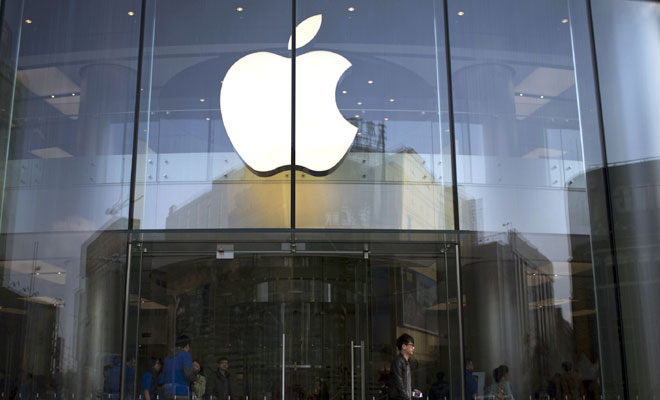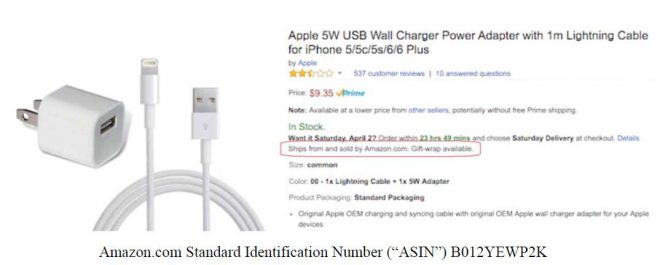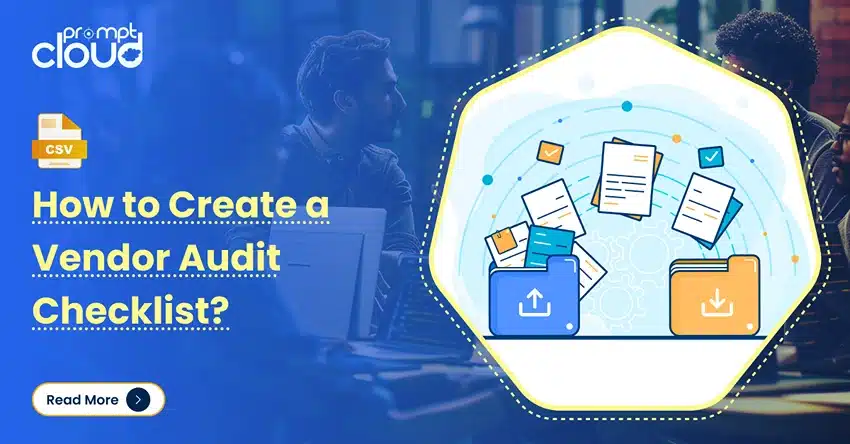Could Apple have Identified Counterfeit Products by Web Crawling Amazon? Well, two of the biggest names in tech were recently in news for something they both weren’t happy about. Apple figured out that most of the chargers and lightning cables being sold on Amazon as genuine Apple accessories were in fact counterfeit products. The irony is that these products were directly being sold by Amazon which leaves no reason for the consumers to question their genuineness. If you haven’t been keeping up with the news, here’s some backstory.
The story so far
[spacer height=”10px”]Apple has been secretly purchasing chargers and cables from Amazon to perform safety tests and inspections. This revealed that a huge number of these products were “poorly constructed, with inferior or missing components, flawed design, and inadequate electrical insulation.” The only reason why these products were being bought by customers was the trust they have in Amazon. Consumers who purchased these items believed them to be genuine Apple products. The product pages even featured Apple’s product marketing images and the “by Amazon.com” tag which made it look totally real. The products also had the Amazon Standard Identification Number (ASIN) B012YEWP2K. Although amazon promptly deleted the product pages, PatentlyApple (a blog that is focused on apple) procured screenshots of the pages beforehand.
One of the products in question had the title “Apple 5W USB wall charger Power Adapter with 1m Lightning Cable for iPhone 5/5c/5s/6/6 Plus”. This was being sold at $9.35 for Prime members and it also mentioned “Ships from and sold by Amazon.com.” The customer reviews on the page were all negative and clearly reflected the disappointment of the users. Apple said that these products were poorly constructed, had insufficient insulation to protect the users, and could cause electric shocks or fires.
Apple is suing the seller Mobile Star LLC for damages of up to $150,000 for every registered copyright that was violated and statutory damages up to $2,000,000 for each counterfeit mark per type of product sold by them.
Counterfeit products have been a headache to consumers as well as brands for a long time now. The technological advancements and ease of access to them have led to the sophistication of counterfeit product manufacturing. There’s no doubt that the counterfeit accessories being sold have been tarnishing Apple’s brand image among the customers. This is something that has the potential to take a great company downhill. Is there an efficient way to reduce the risk of the bad brand image resulting from fake product sales? That’s exactly what we’re about to talk about.
Meet web crawling – a dynamic solution to monitor your brand on the web, including sentiment analysis, brand monitoring, and of course it can be used to identify fake products being sold on Ecommerce sites. We’ll discuss how web crawling can be used to detect fake products on the E-portals.
Using web crawling to detect counterfeit products
[spacer height=”10px”]Web crawling is a versatile technology and can be designed to suit a plethora of use cases. When it comes to the detection of counterfeit products on Ecommerce websites, there are a few red flags to look for. Here is what you could set a web crawler to look for in the product catalogs.
1. High price fluctuation
If you notice a huge variation in price for a product that you’re watching, it could be a sign of the product being fake. Of course, we need to factor in the discounts provided by Ecommerce companies themselves, but a counterfeit product is likely to show unbelievably discounted prices at some point and would keep on fluctuating. I for example recently purchased a pair of JBL headphones from Amazon which was being sold at a discount of 60% for no reason. It turned out to be a counterfeit product but Amazon was prompt to solve the issue when contacted about it. A price that swings a lot is certainly something to monitor using a crawling set up. In case of doubt, you could always order one to have it checked which would be a lot easier than buying everything.
2. Look for unauthorized sellers
If your company has authorized sellers for products, components, or accessories, the best thing to do is crawl the entire catalog looking for product listings by sellers other than the authorized ones. If you find an unauthorized seller, there is a high chance that the product is a duplicate. It’s fairly easy to set up a crawler to alert you when such instances occur.
3. Crawl the customer reviews
Customer reviews are your best resource to detect counterfeit products on ecommerce portals. A good number of buyers are impressively good at identifying fake products and would have voiced them in the comment section. If customers are posting very bad reviews about a product of yours, you might want to make sure it’s genuine. To make things easier, you could even find customers calling it outright fake in the reviews when that’s the case. Crawling the reviews of your products from Ecommerce websites can be a large-scale activity but is certainly doable if you have the right resources.
Takeaway: Keep your brand image tidy
[spacer height=”10px”]The sales of counterfeit products have affected the brand image of Apple among unsuspecting consumers of these products. The damage is already done and there’s no undoing it. Using a web crawling set up to look for the above discussed red flags could have saved apple the bad publicity and hard hit to their brand image. Now that we have easy to deploy web crawling technology that can discover this type of negative elements, why not make use of it to keep your brand healthy?





















